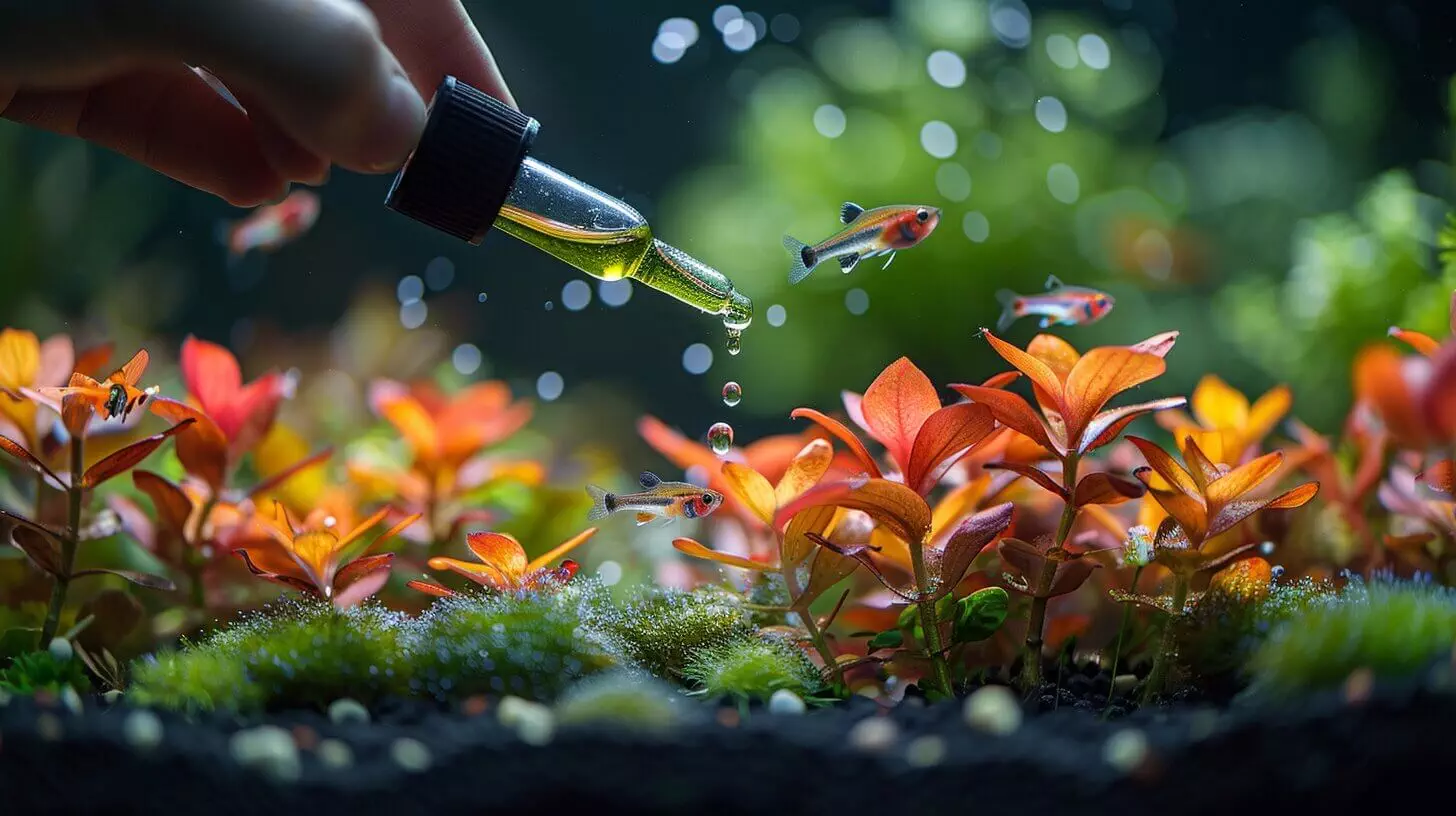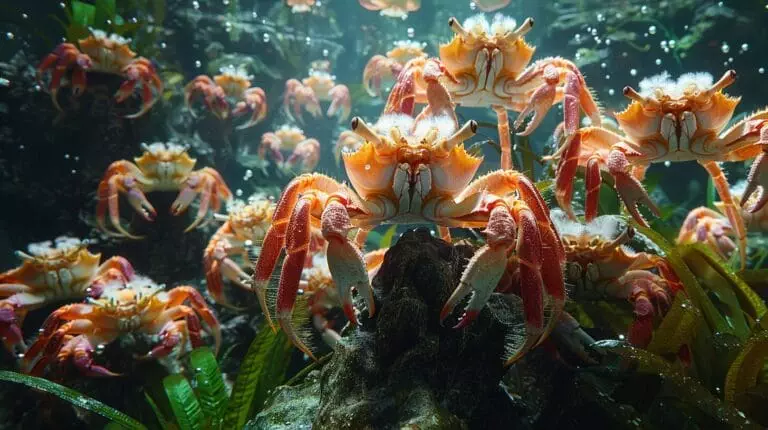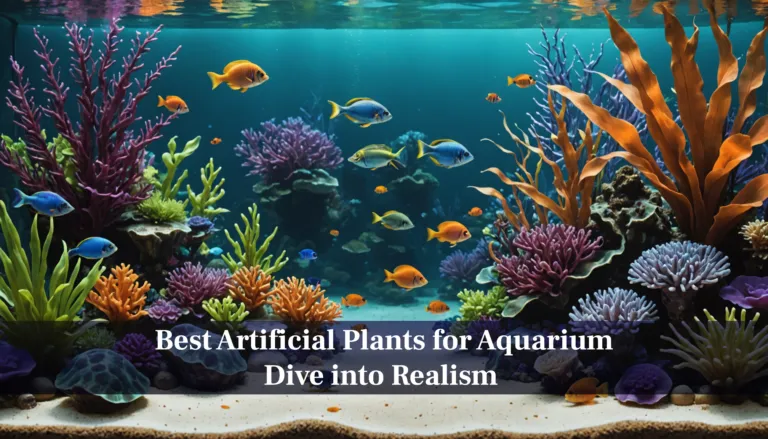Let’s talk about an issue many of us face as fish tank owners: algae. It’s unsightly and can harm our aquatic friends if left unchecked. We are aware there are plenty of chemical solutions out there, but did you realize vinegar might be a safer alternative? When used correctly, it can effectively clean algae without endangering fish. However, it’s important we follow specific steps to guarantee their safety.
So, how can we harness vinegar’s cleaning power while keeping our fish healthy? There’s a method to this, and it starts with understanding the right way to use vinegar.
Key Takeaways
- Vinegar’s acidic nature effectively breaks down and dissolves stubborn algae in fish tanks.
- Use a diluted vinegar solution (one part vinegar to three parts water) to clean the tank safely.
- Remove fish before applying the vinegar solution to avoid disrupting the tank’s pH balance.
- Thoroughly rinse the tank and equipment with fresh water after cleaning to ensure no vinegar residue remains.
- Regular maintenance and natural methods, like algae-eating fish, help prevent future algae buildup.
Understanding Algae Problems in Your Fish Tank

Algae are common in aquariums, but not all algae are the same. Identifying types like green algae and blue-green algae (which are actually bacteria and potentially harmful) is essential for effective cleaning and maintaining a safe environment for our fish.
Algae thrive on light and nutrients, so excessive lighting or nutrient-rich water can cause a bloom. This signals the need to adjust tank conditions to prevent further growth. Regular cleaning is key to address these problems, and using vinegar is a popular, safe method to remove stubborn algae.
The Role of Vinegar in Algae Control

Vinegar, containing acetic acid, is a potent weapon against algae growth. Its acidic nature helps break down and dissolve the algae, making it easier to clean the tank. Not all types of vinegar are created equal. White distilled vinegar is most recommended as it’s free from additives that could harm our aquatic friends. It’s a natural alternative to harsh chemicals, ensuring our fish tank remains a safe haven.
How to Use Vinegar Safely in Your Fish Tank

Using vinegar safely involves preparing a diluted solution of one part vinegar to three parts water. Removing the fish and placing them in a temporary holding tank with clean water is essential. This prevents direct contact between the vinegar solution and our fish. Once the fish are removed, we can use a sponge or cloth to apply the vinegar solution to the tank’s walls, scrubbing any algae.
Here’s a quick reference table for the process:
| Step | Action | Notes |
|---|---|---|
| 1. Prepare Solution | Mix 1 part vinegar with 3 parts water | Ensure proper dilution |
| 2. Remove Fish | Place fish in temporary clean water | Avoid direct contact with vinegar solution |
| 3. Apply Vinegar | Use sponge/cloth to scrub algae | Focus on affected areas |
| 4. Monitor Fish’s Health | Observe fish for any stress signs | Ensure they are safe and healthy |
It’s important to rinse the tank thoroughly with clean water after cleaning, ensuring no vinegar residue remains.
Cleaning Your Aquarium Equipment with Vinegar

Cleaning our aquarium equipment with vinegar not only removes hard water stains but also guarantees a safe environment for our fish. When we clean our fish tank accessories, using white vinegar is a powerful and natural method. This common household cleaning product is both effective and gentle, allowing us to banish stains or algae without introducing harmful chemicals into the tank.
- First, let’s gather our equipment: scrub brushes, white vinegar, and a container for soaking. We’ll mix a solution of one part white vinegar to one part water in the container.
- Next, we’ll submerge the equipment—heaters, filters, and decorations—for about 15 to 20 minutes. This soaking period helps loosen any stubborn residues.
- After soaking, we grab our scrub brushes and start scrubbing away any remaining stains or algae. For particularly stubborn spots, applying undiluted vinegar directly to the area can make a significant difference.
Once we’re satisfied with the cleanliness, it’s important to rinse everything thoroughly with fresh water. This step ensures no vinegar traces remain, which could potentially harm our fish.
Maintaining a Clean Fish Tank Naturally

Maintaining a clean fish tank naturally involves consistent care and smart strategies to keep algae growth at bay. We can enjoy a beautiful, algae-free tank by following a few simple tips that don’t require harsh chemicals. While using a fish tank with vinegar is one option, there are other effective methods to think about.
- Essential Water Environment: Ensuring the right balance in our tank is important. By maintaining proper pH levels, temperature, and filtration, we create an environment that prevents excessive algae growth. Healthy bacteria in the tank also help maintain this balance.
- Natural Algae Eaters: Introducing algae-eating fish or snails can be a natural way to control algae. These creatures consume algae as part of their diet, helping to keep the tank clean without the need for white vinegar or other chemicals that could be harmful.
- Regular Maintenance: Consistently cleaning the tank and equipment is necessary. Although using a solution of white vinegar and water can be effective, it’s important to rinse everything thoroughly to avoid any harmful residues. Regular water changes and removing debris will also keep algae at bay.
Conclusion
To sum up, we’ve seen that using vinegar to control algae in your fish tank is both effective and safe when done properly. By following our tips—removing the fish, preparing a diluted vinegar solution, and thoroughly rinsing the tank—you can maintain a clean and healthy environment for your aquatic pets.
Let’s ditch the harsh chemicals and embrace a natural, fish-friendly approach to aquarium maintenance. Your fish will thank you!
Frequently Asked Questions
Will Vinegar Kill Algae in a Fish Tank?
Vinegar can help to kill algae in a fish tank due to its acidic properties. However, it may not completely eradicate all types of algae, especially hardy species. In some cases, using vinegar to kill algae may require multiple treatments over a period of time. Additionally, it is important to thoroughly clean the fish tank and remove as much algae as possible before using vinegar. Another alternative method for removing algae is to use an electric aquarium gravel cleaner, which can help to effectively remove algae and other debris from the tank substrate. This can be particularly useful for larger or heavily planted tanks where manual cleaning may be more challenging.
Is It Safe to Use Vinegar to Clean a Fish Tank?
Yes, vinegar is safe to use for cleaning a fish tank as long as it is diluted properly and rinsed thoroughly to avoid any harm to your fish.
How Should I Clean My Fish Tank with Vinegar?
To clean your fish tank with vinegar:
- Mix a solution of vinegar and water (usually a 1:1 ratio is effective).
- Use a towel, sponge, or scraper to wipe away any deposits or algae.
- Rinse the tank thoroughly with water several times to ensure no vinegar residue remains before putting your fish back in.
Can Vinegar Remove Water Stains from a Fish Tank?
Yes, vinegar is a great natural cleaner that can effectively remove water stains from a fish tank, especially those caused by hard water deposits.
What Type of Vinegar Should I Use to Clean My Fish Tank?
White distilled vinegar is the most commonly recommended type of vinegar to use for cleaning fish tanks as it is effective and safe for your fish.






